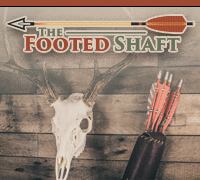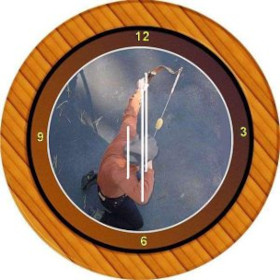Another factor that ought to be considered is the effect on accuracy of a 1” increase in draw length using the same bow, resulting in a 2-3 pound increase in draw weight. If a 1” increase in draw length is a byproduct of improving form, then we have three factors working for us: the increase in stored energy, the increase in poundage, and the increase in accuracy.
This is often the case when someone who has been drawing to full draw and shooting fairly well goes the extra step from full draw to transfer to hold before shooting. Or, as Terry would say more simply, achieves better alignment. The transfer to hold step achieves better bone on bone alignment along with an increase of up to an inch in draw length. This makes it easier to hold the 2-3 additional pounds than it was before the transfer to hold 2-3 pounds less, and thus increases accuracy.
OTOH, if one simply muscles the bow back another inch, the increase in velocity simply makes it possible to miss by a greater distance with a faster arrow.














